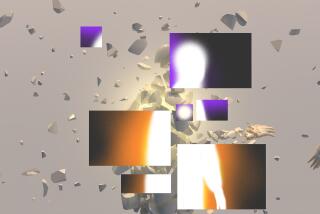A new measure may unlock the mysteries of pain
If you have ever arrived at a hospital writhing in agony and had the six faces of the “Wong-Baker Pain Assessment Scale” thrust in front of you, you know that the medical profession’s understanding of pain is, shall we say, in a rudimentary state. But a new study suggests there may be a more revealing way to communicate the experience of pain than pointing to a grimacing stick-figure face with furrowed brows and some tears.
A group of scientists at the University of Michigan have succeeded in using functional magnetic resonance imaging to tease apart the brain’s consistent response to physical pain from its very similar response to emotional pain. The result is a moving picture of physical pain that allowed the researchers to predict with remarkable accuracy whether the individual whose brain they were watching was experiencing intense physical pain, the sensation of a warm spot on his arm, or the sting of social rejection.
Physical pain is a deeply subjective sensation. The same physical insult is felt differently from person to person. It can be magnified by depression; masked by drugs or the experience of shock; brought on, even, by social rejection or the loss of a loved one.
To make matters more complex, the line between emotional anguish and physical pain is a thin one -- and with good reason, because the brain circuits that processes physical pain largely overlap with those that process social pain.
But the latest research, published in Thursday’s edition of the New England Journal of Medicine, offers the tantalizing prospects that pain “could be objectified by a measure that did not require direct patient reporting,” as an editorial commenting on the study put it.
In four separate experiments, researchers put 114 subjects into fMRI scanners and watched as the participants had a heated wand applied to their arm. The tip of the device could deliver “thermal stimuli” ranging from innocuously warm to painfully hot.
In the first two studies, researchers developed for each subject a “neural signature” of physical pain. They found that in 94% of cases, seeing only those predictable patterns of brain activity would allow researchers to tell whether the subject was in pain.
In a third study, 40 participants underwent the same battery of stimuli. But researchers also recorded their brains’ responses to a form of social pain -- the intense rejection each felt from seeing photographs of a person who had recently instigated a wrenching romantic break-up.
While there was considerable overlap between the neural signatures of social rejection and of physical pain, small differences between the two allowed researchers to tell whether a subject in a scanner was feeling the sting of being dumped or the burn of a hot poker pressed against her arm 78% of the time -- a success rate much better than chance.
In a fourth study, the researchers showed that infusions of the potent narcotic remifentanil (Fentanyl) not only suppressed subjects’ subjective experience of pain when the heat on their arm was intense; it also suppressed the neural brain “signature” of pain by an average of 53%.
For medical practice, the implications of this work are far-reaching.
If a clear measure of physical pain could be reliably captured by an imaging machine, patients who are “locked in” to bodies broken by disease or injury could tell their doctors if they hurt -- and what helps. Developers of pain-fighting drugs or devices would have a consistent metric by which to judge the effectiveness of their therapies. Opiate drug-seekers who claim to be in pain could be referred to addiction treatment rather than have their habit fed. Patients with phantom-limb pain, or whose chronic pain is exacerbated by depression, might use the images to guide efforts at pain-suppression.
Identifying the neural signature of physical pain — and differentiating it from that of social pain — is an exercise with “enormous clinical relevance,” said University of Michigan psychologist Ethan Kross, the paper’s senior author. The techniques used in this round of research, he added, will need much refinement before they are ready to be used in physicians’ offices.
“We’re just beginning to scratch the surface,” he said: Now that researchers can recognize two deeply subjective states of experience in the brain, they have come closer to learning how they might recognize the neural signatures of other complex emotions — empathy, jealousy, anger or love.
“This data suggests it may be possible to look at patterns of neural activity across the brain to predict complicated psychological states,” Kross said. “That’s what really gets me excited.”
Nathan DeWall, a University of Kentucky psychologist who also studies social pain, called the latest work “riveting.” DeWall, who was not involved in the NEJM study, said its “elegant methods” and “clean results” will propel a relatively new line of research that exists at the juncture of medicine and neuroscience.
The experiments demonstrate how high-tech brain scanners could help physicians assess clinical symptoms “that were previously thought to be impenetrable,” wrote Dr. Assia Jaillard, a French radiologist, and Brigham and Women’s Hospital neurologist Allan H. Ropper in the editorial that accompanied the study.
“Being doctors, though, we may ultimately have to acknowledge that ‘pain is pain,’ and can be reported only by the patient,” they added.







